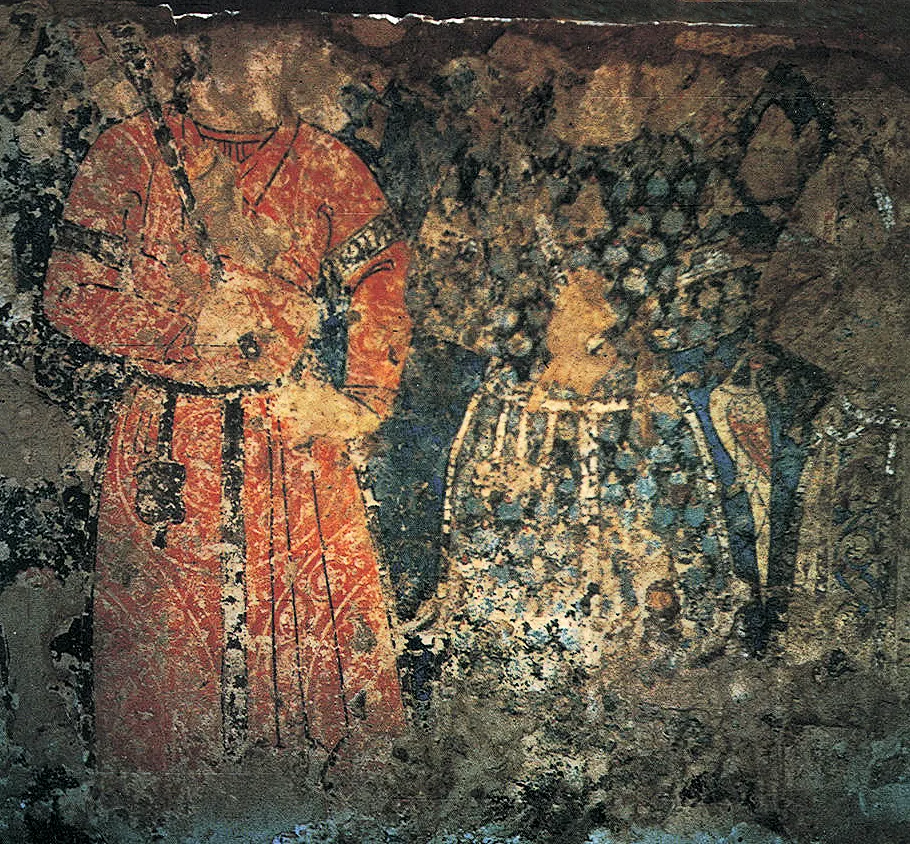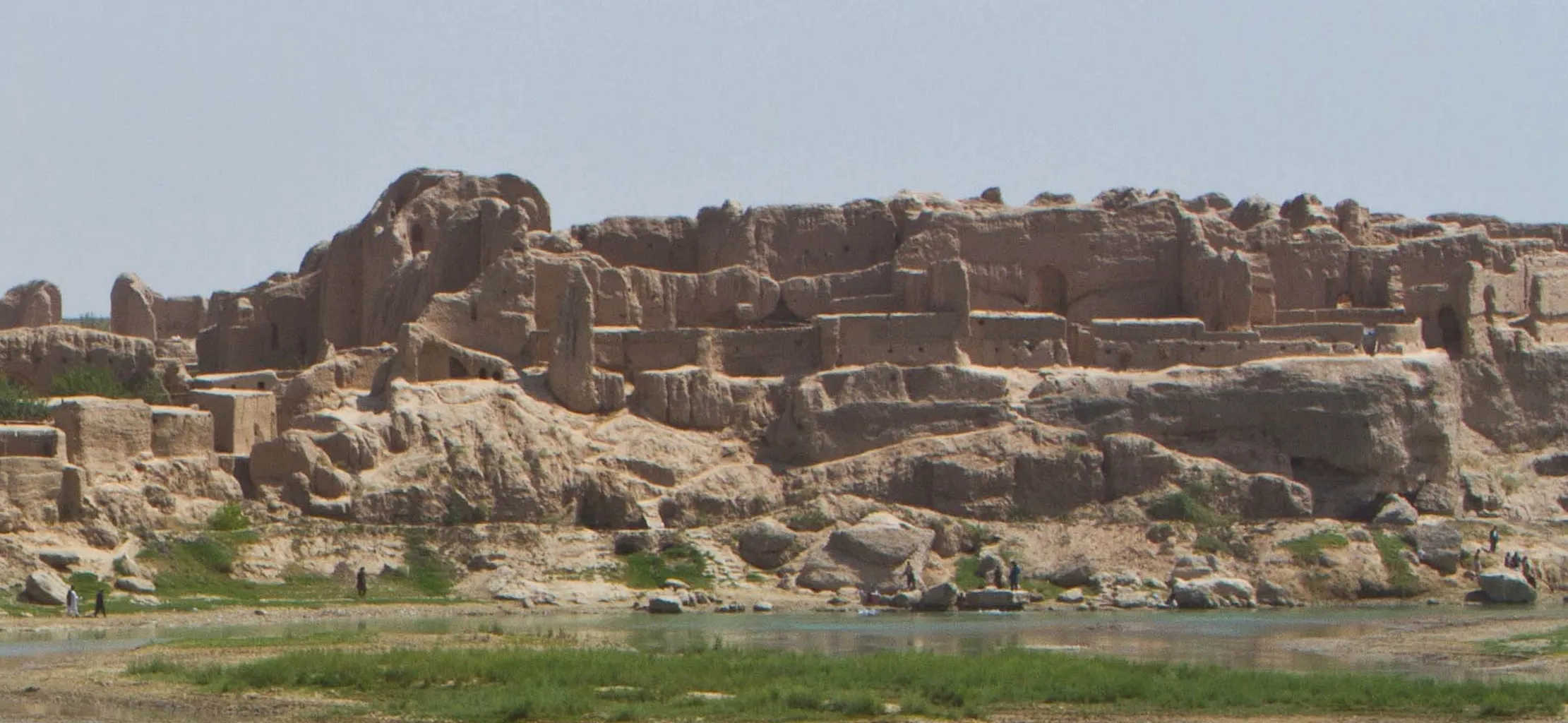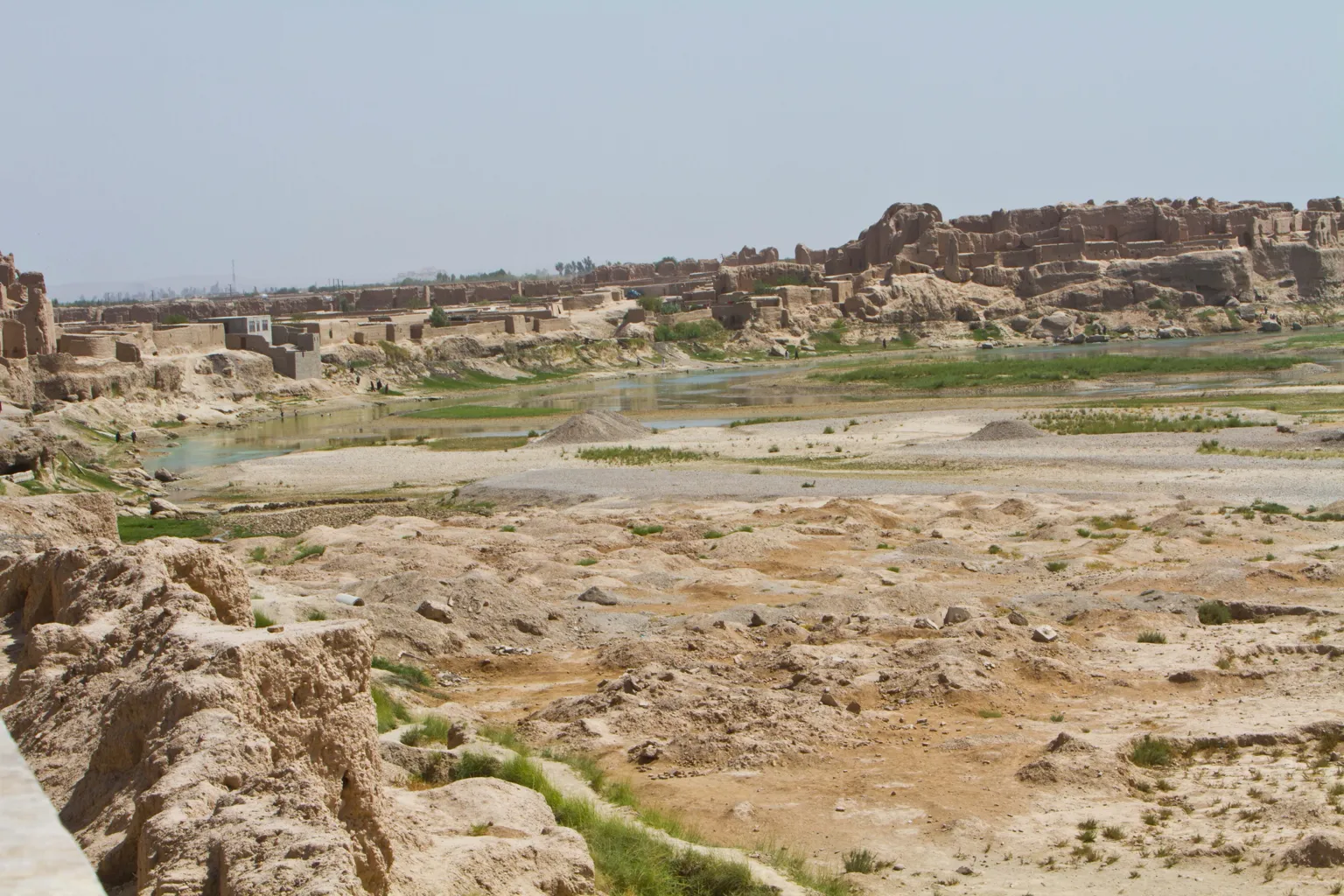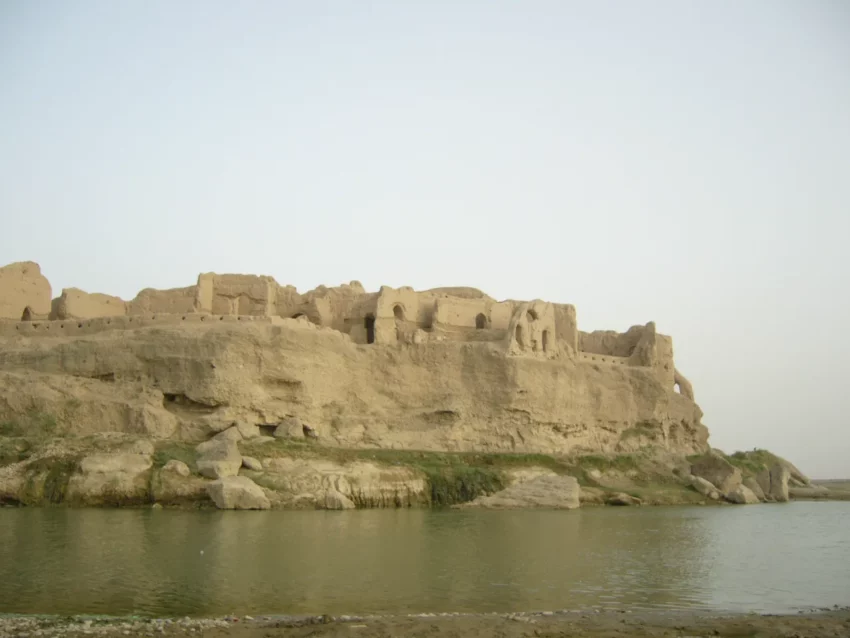The Ghaznavid Palace of Lashkari Bazar
In the heart of ancient Afghanistan lies the grand Lashkari Bazar, a Ghaznavid palace adorned with fascinating murals. These artworks, found in the audience hall, provide a glimpse into the past, revealing stories and traditions long forgotten.
Get your dose of History via Email
The Majestic Murals
The murals of the audience hall, although damaged, still hold great historical significance. They depict rows of figures, possibly representing the elite guards of Sultan Mahmud. These guards, as described by historical texts, stood on either side of the throne, adorned with elaborate headgear and armed with gilded maces.

A fragment of a colonnette from the hall, showcasing an adolescent’s face with a halo and turban, offers a rare glimpse into the detailed artistry of the time. The youth, seen in three-quarters view, appears engaged in an action now lost to history. This piece, along with others, survived thanks to a protective layer of plaster, which, despite being charred and deteriorated, shielded the ancient paintings beneath.
The Historical Context
Determining the exact age of these paintings remains challenging. However, the palace’s oldest and most luxurious period likely corresponds with these artworks. This suggests that the murals date back to the early 11th century AD, aligning with the construction of the palace.

Representing the Elite
The figures in the murals are believed to represent Sultan Mahmud’s Turkish slave guards. Historical records mention these guards, who stood by the throne during audiences, dressed in opulent attire. The murals likely reflect this tradition, portraying the guards in their ceremonial garb, complete with embroidered robes and distinctive headgear.
Artistic Parallels
Interestingly, the murals of Lashkari Bazar share similarities with Central Asian Buddhist art. Both feature detailed costumes, including long robes with asymmetrical collars, adorned with armbands and sashes. These elements highlight a blend of cultural influences, with Central Asian styles permeating Ghaznavid art.
Architectural Splendor
The architecture of Lashkari Bazar also draws comparisons with other significant Islamic sites. The grand iwan of the audience hall, with its decorative brickwork, mirrors styles seen in Samarra and other Abbasid structures. This blend of regional influences creates a unique architectural identity for Lashkari Bazar.
Early Foundations and Development
The roots of Lashkari Bazar trace back to the Parthian period. The Center Palace, measuring 32×52 meters, likely dates from the Samanid period (819-999 AD). By 661 AD, Arab conquerors had taken over the area, transforming it into a prosperous city.

The Grand South Palace
The South Palace, the crown jewel of Lashkari Bazar, spans an impressive 170×100 meters. Founded by Mahmud of Ghazni (998-1030 AD) and expanded by his son Masud I (1030-41 AD), this palace served as the Ghaznavid rulers’ winter retreat. The South Palace boasted rich decorations, including stucco, paintings, frescoes, and carved marble panels. A bustling bazaar, stretching about 100 meters, connected to the palace, highlighting the area’s vibrant commercial life.
Later Constructions and Additions
The Northern Palace came into existence under later rulers, adding to the site’s architectural diversity. Despite the destruction brought by the Ghurid dynasty in 1151 AD, they restored many sections of the palaces. They also built the nearby fortress of Qala-e-Bost, along with a significant architectural arch, about 7 kilometers to the south.
Modern Times and Current Inhabitants
In recent years, the ruins of Lashkari Bazar have provided refuge for Afghan families fleeing Taliban violence. These ancient walls now shelter those in need, continuing to serve the community in a different capacity.
Conclusion
The Ghaznavid Palace of Lashkari Bazar, with its intricate murals and grand architecture, offers a window into a rich and complex past. These remnants of history, preserved against the odds, continue to captivate and inform, shedding light on the artistic and cultural achievements of the Ghaznavid dynasty.
Sources:
Schlumberger, D. (1952). Le Palais ghaznévide de Lashkari Bazar. Syria, 29(3/4), 251-270. Institut Francais du Proche-Orient. https://www.jstor.org/stable/4390312

